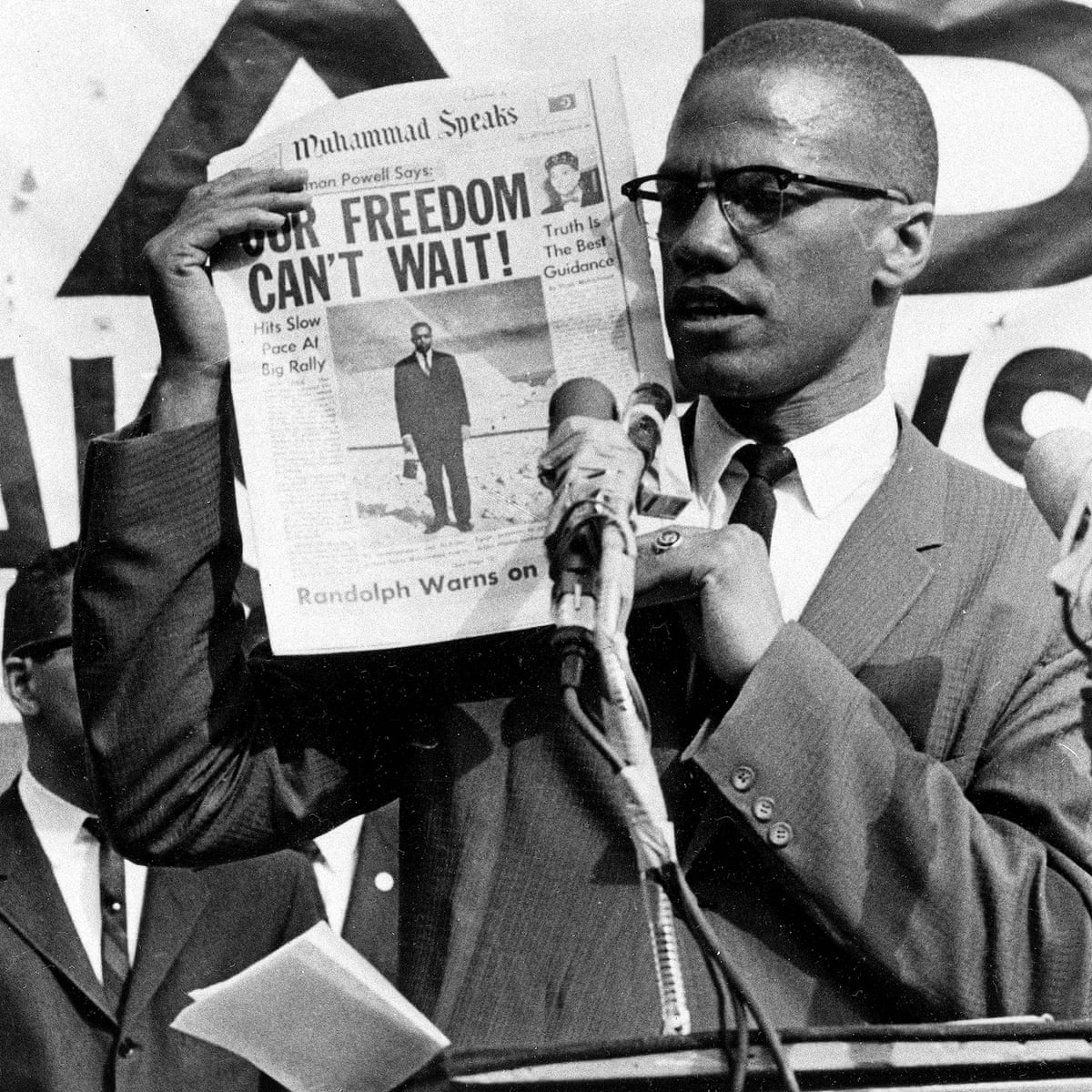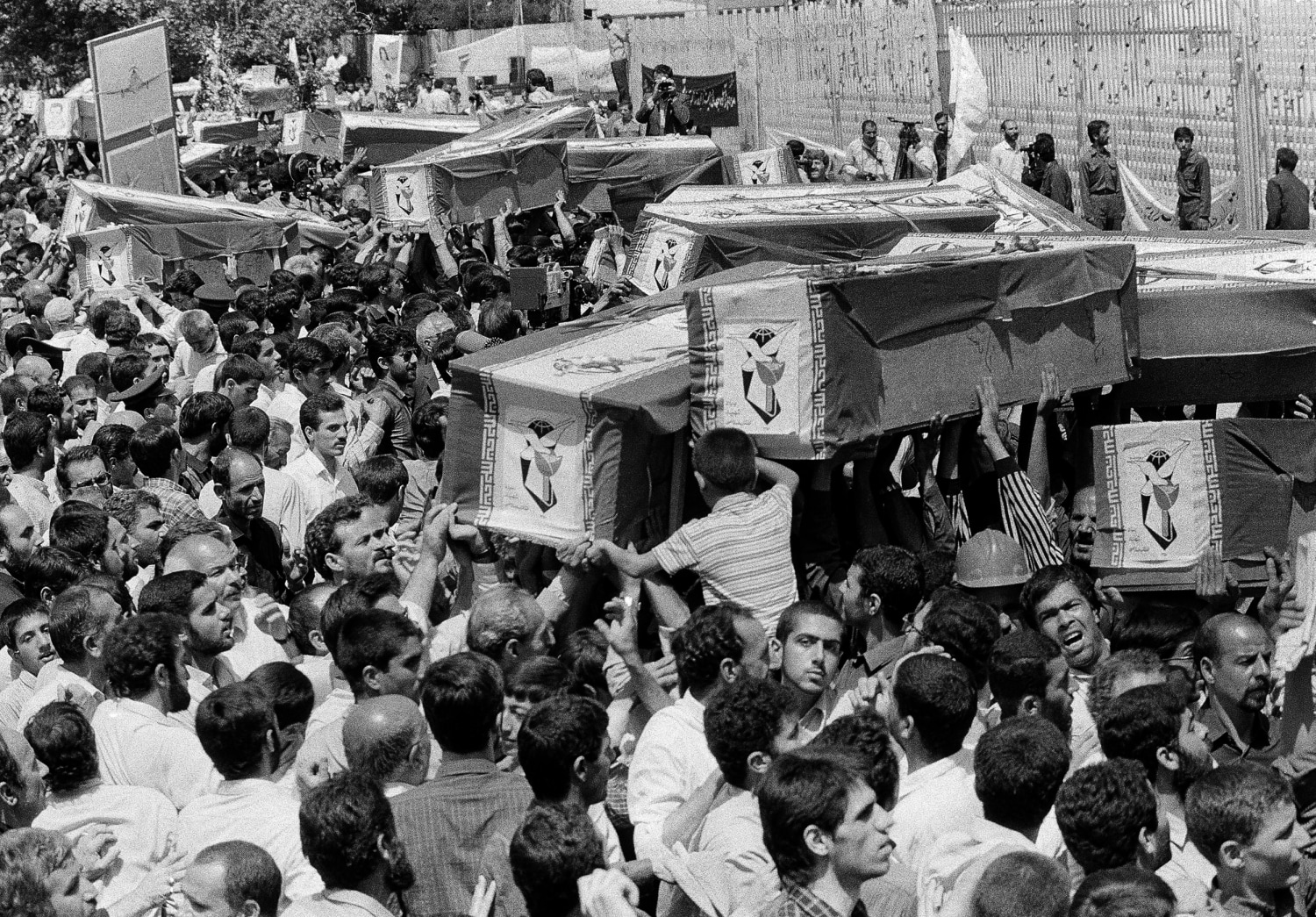& Regime Change
This famous Black Nationalist and former spokesperson for the Nation of Islam advocated for racial justice and resistance by any means necessary until his assassination in 1965.
 Malcolm X
Malcolm X
In 1953, during this CIA-backed war between two halves of what once the same country, the U.S. Air Force destroyed five dams in the northern communist country, causing widespread flooding and farmland destruction.
The Korean War
The Iranian politician who served as the 30th prime minister and planned to nationalize Iranian oil and introduce huge social reforms, until the 1953 CIA and M16 backed coup that removed him from power.
 Mohammad Mossadegh
Mohammad Mossadegh
These two key figures founded modern communist theory in 19th century Germany, authored multiple books including the famous Communist Manifesto and are widely credited as the fathers of the ideology.
Karl Marx & Friedrich Engels
This revolutionary leader, alongside his brother, Raúl, led the Cuban revolutionary army against dictator Fulgencio Batista after the 1952 coup, succeeding in toppling the U.S. backed regime on New Year's, 1959, becoming prime minister, and later, president of the new one-party communist state.
 Fidel Castro
Fidel Castro
This Argentine Marxist and class traitor was a key figure in the Cuban Revolution, becoming a guerilla warfare general for the working class. Post his assassination in 1967, his image continues to be immortalized worldwide.
 Che Guevara
Che Guevara
The prison where U.S. Army and CIA personnel committed abusive war crimes, including physical and psychological torture of civilians detained during the Iraq War, from which this famous photograph depicting the torture of Abdou Hussain Saad Faleh emerged, among many others.
Abu Ghraib Prison
This left-wing Brazilian president, commonly known as Jango, was overthrown by the 1964 military coup d'état backed by the United States, which ushered in the era of military dictatorship in Brazil.
João Goulart
This Russian leader of the Bolshevik party was ideologically a Marxist, but his developments to the ideology formed it's own subgroup under communism, often paired with Marxism.
 Vladimir Lenin
Vladimir Lenin
This country's revolution, led by Toussaint Louverture, was the first Latin-American colony to abolish slavery and is the only known slave rebellion that led to the founding of an independent state both free from slavery and led by Black and Indigenous people.
 Haiti
Haiti
This young Black Panther Party chairman who founded the Rainbow Coalition, uniting all races of the working class, was only 21 years old when he was assassinated by Chicago police in 1969.
 Fred Hampton
Fred Hampton
On July 3rd, 1988, the United States military shot down a civilian passenger flight, killing all 290 people on board, which hailed from this country in the midst of a U.S.-backed war with one of their neighbors.
 Iran
Iran
This right-wing fascist dictator of Cuba was installed via coup d'état and backed by the United States until the people's revolutionary guerilla army successfully defeated him on December 31st, 1958.
Fulgencio Batista
Marx writes that modern society is split among two distinct groups, the exploitative elite class, the bourgeoisie, and a disenfranchised exploited and oppressed class, often referred to as the working class, described as this word by Marx.
Proletariat
This revolutionary politician was a founding member and chairman of the Chinese Communist Party (CCP) and leader of the Red Army in the revolution, serving as leader of the People's Republic of China (PRC) until his death in 1976.
 Mao Zedong
Mao Zedong
This Pan-Africanist revolutionary advocated for Burkina Faso's self-sufficiency and resistance against western imperialism, serving as president for four years, ending in a CIA-backed coup and his assassination in 1967.
 Thomas Sankara
Thomas Sankara
Massacre committed in South Vietnam where over 500 Vietnamese civilians, men, women, children and elders were brutally murdered, raped and mutilated by U.S. soldiers.
 My Lai Massacre
My Lai Massacre
In 1961, Patrice Lumumba, the first prime minister of the Republic of Congo, was killed by U.S. and Belgian-backed forces, who used this famous jazz singer as a distraction to carry out the coup without his knowledge.
 Louis Armstrong
Louis Armstrong
This concept, as written by Marx and Engels, describes the driving force of history, a constant struggle between the ruling and oppressed classes.
Class struggle
This faction of the Marxist Russian Social Democratic Labour Party (RSDLP), led by Vladimir Lenin, seized power in the 1917 Russian revolution and was later renamed the Russian Communist Party.
 The Bolsheviks
The Bolsheviks
This Palestinian author and militant took part in the founding of the Popular Front for the Liberation of Palestine (PFLP) in 1967, becoming the official spokesman and editor of the movement's newspaper, before his assassination in Beirut in 1972.
 Ghassan Kanafani
Ghassan Kanafani
The city where police dropped two C4 military-grade bombs on a home in the Black neighborhood of Cobbs Creek where the revolutionary group MOVE was housed, murdering eleven people, including two children.
Philadelphia
This U.S.-based corporation was supported by the government to overthrow of Guatemala's president Jacobo Árbenz, installing a line of right-wing dictators to retain their monopoly on the tropical agricultural produce industry.
United Fruit Company
The theoretical premise of Marx's ideas on development and change was the work of another philosopher, though Marx had to turn this philosopher's ideas "right side up" in order to apply them to material reality.
Hegel
This revolutionary party leads Nicaragua to this day after their tremendous victory in overthrowing the fascist U.S.-backed Somoza regime in 1979.
Frente Sandinista de Liberación Nacional (FSLN)